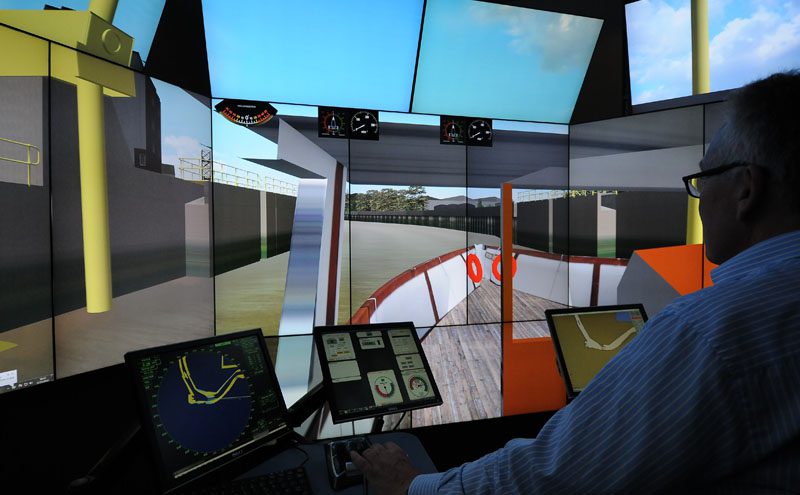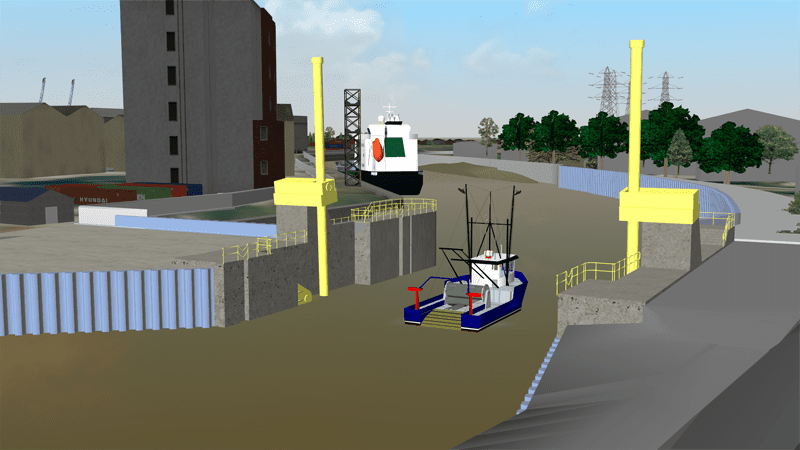
The Transport and Works Act Order (TWAO) for the Boston Barrier has received approval, giving the Environment Agency the go-ahead to proceed with the construction and operation of the £100 million flood defence scheme to better protect Boston’s homes and businesses from the risk of tidal flooding. As part of the public enquiry, HR Wallingford’s UK Ship Simulation Centre worked with Mott MacDonald and the Environment Agency to create a virtual navigation simulation to help river users better understand what navigating the river would be like, both during the construction phase and when the barrier is in place.
Construction is due to begin in The Haven – the tidal stretch of the River Witham – in January 2018, and will better protect against tidal surges, such as was seen in December 2013, when over 800 homes and businesses in the Boston area were flooded. A key element throughout the project has involved ensuring extensive consultation takes place with the local community, river users and businesses, to achieve environmental and economic benefits for the town, and to avoid particular groups being disadvantaged as a result of the barrier being built.
In October 2016, river users were invited to the UK Ship Simulation Centre at HR Wallingford where they could experience the navigation of their vessels under the conditions that will exist both during the construction and operation phases of the Boston Barrier. The barrier is designed to operate over the next 100 years, and the presence of the structures associated with the new barrier will alter the flows that vessels currently encounter.
HR Wallingford’s engineers modelled a wide range of vessels including the Boston Belle, fishing vessels, the Port of Boston dredger “Mary Angus”, yachts, narrowboats and a wide beam canal boat, to test how they would be able to transit the modified river. They looked at how they would negotiate the proposed barrier structures, including when other vessels might already be moored on the port estate external quays.

Before the simulation could be created, Mott MacDonald undertook flow modelling of the river conditions, including both tidal and river discharge components, looking at past events on the river when conditions were either ‘typical’ or ‘difficult’ for navigation. Provided with this information, HR Wallingford was able to create a virtual waterway in its UK Ship Simulation Centre for existing river users to test what it would be like to navigate their vessels on the river with the proposed barrier structures in place.
Gillian Watson, Principal Engineer, Ships, HR Wallingford, said: “The aim of the simulator was to create a realistic navigation experience of the river with the barrier structures in place. This included simulating, not only the new visual scene, but what is really important for the river users, creating the modified river conditions, with a credible simulation of how the vessels will operate in the new situation. We were then able to use the simulation to test the manoeuvring scenarios of a range of different vessels that use the River Haven, to establish if there were any navigation concerns, and to develop and test suitable mitigation measures.”
With the barrier in place , Boston will have one of the best standards of protection against tidal flooding outside of London. The Environment Agency is investing £2.5 billion across the country, which will see 1,500 flood defences reducing risk to 300,000 homes by 2021.






